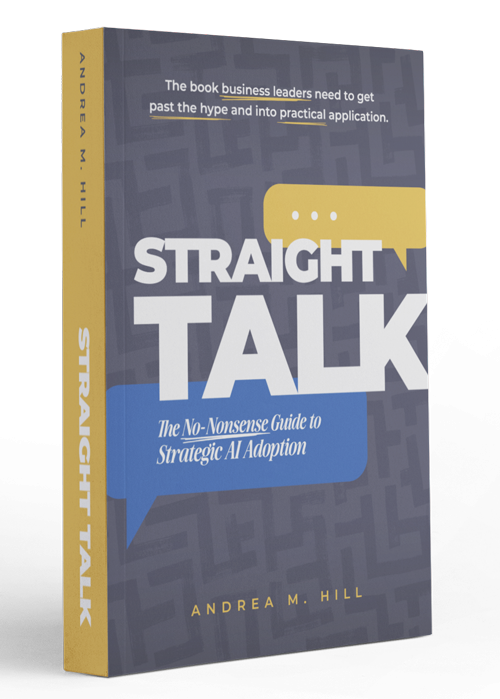Why You Should Create a Buyer Persona

Imagine a group of entrepreneurs about to launch a new business. The team has developed a product they believe in. They’re proud of their high-quality production, their eye-catching packaging, their pitch-perfect product description, their well-trained customer service and sales teams. They’ve developed a strong brand identity, and they’ve told everyone about how great the company and the product is on social media, in blog posts, and in advertisements.
That should guarantee a successful product launch, right? The truth is, it’s possible to do all that and still fail. The problem is that they failed to consider who would actually be interested in this product and what problems this product will solve for them. The business was so focused on themselves and their product that they never developed a strong case for how their product could improve the lives of their customers— they didn’t even spend any time thinking about who their customer actually is.
Who will be buying your products? The novice will say, “well, everybody, right? I want everybody to buy this.” It would be wonderful if every single person in the world bought your product, but with so many businesses to choose from, consumers will gravitate to the ones that engage them on a personal, emotional level and connect with their sense of aesthetics and ethics.
Before launching a product—before even developing and producing a product—you have to understand what kind of consumer will connect with your business. That’s where the buyer persona comes in.
What is a Buyer Persona?
A buyer persona is a character you create to represent a customer group—namely, the group of customers you hope to attract to your business. You create this persona by aggregating data, interviews, surveys, and observations to determine marketing strategy.
If you are familiar with account-based marketing, you may have heard of the ideal customer profile (ICP). A buyer persona differs from the ICP in that a buyer persona is a fully fleshed-out character, complete with a name, fictional history, and even a photo. The buyer persona serves as a focal point for all of your marketing activities.
What Creating a Buyer Persona Achieves
Connecting with the right customers. If you try to appeal to everyone, you just might end up appealing to no one. While targeting a particular segment of consumers seems like you’re reducing your options for sales, you were never going to be able to capture every single customer, anyway. That’s OK—you don’t need all of the customers; you just need the right customers: the ones who are going to love everything you do, who will tell their friends about you, who are already looking for exactly what you are offering. Constructing a buyer persona will allow you to better signal to the right customers that yours is the business for them.
Creating opportunities for personalization. The post-pandemic 2020s have been all about personalization. The worst experiences as a customer are the ones where you don’t feel like a person, where you feel ignored, where you feel like the business couldn’t care less about your needs. Personalization builds a relationship between a business and a customer, giving you the ability to better serve your customers while creating brand loyalty.
Focusing your content marketing strategy. Having a buyer persona in mind gives you a clear direction for content marketing. Knowing who you are trying to reach gives you an idea of what kind of content you need to create.
If you’re trying to reach Gen Z or millennial consumers, you might think about marketing on TikTok with fun, casual, authentic content. To connect with these consumers, you’ll want to appeal to their values and show that you are truly one of them and not simply pandering. While these are values-driven consumers, they are also wary of “greenwashing” or “pinkwashing” (that is, attempting to seem environmentally friendly or LGBTQ+ friendly without actually doing anything valuable for those causes).
On the other hand, baby boomer and Gen X consumers are often (but not always) less concerned with values and are less likely to engage with video content or influencers on social media. They want expert opinions they know they can trust. These consumers might also be looking for the best price or features that add value.
More Than Demographics
Demographic segmentation is useful, but it’s only part of the work of creating a buyer persona. Going deeper than just “Millennial consumers” or “suburban Americans with an annual income between $75k and $125k per year” will give you a deeper understanding of how to best communicate with your customers. You’ll be focusing your marketing efforts on someone with a name, a history, hopes and dreams and fears, likes and dislikes. Creating a buyer persona helps you focus your messaging in a way that will resonate with the specific people who are most likely to fall in love with your business.
That’s the “why” of a buyer persona. Next time, we’ll talk about how to develop a buyer persona.
Andrea Hill's
Latest Book
Straight Talk
The No-Nonsense Guide to Strategic AI Adoption

Where other books focus on prompts and tools, this book gives business leaders what they actually need: the frameworks and confidence to lead AI adoption responsibly, without having to become technologists themselves.
Also available at independent booksellers and public libraries.
Are You Ready to Do Better Marketing?
WerxMarketing is all about performance marketing. That means giving you the tools you need to connect with customers, enable your sales efforts, and turn leads into loyal customers. Ready to learn more about how we do that? Book a free consult and bring your questions. See if you like working with us on our dime, and get some good advice in the process.